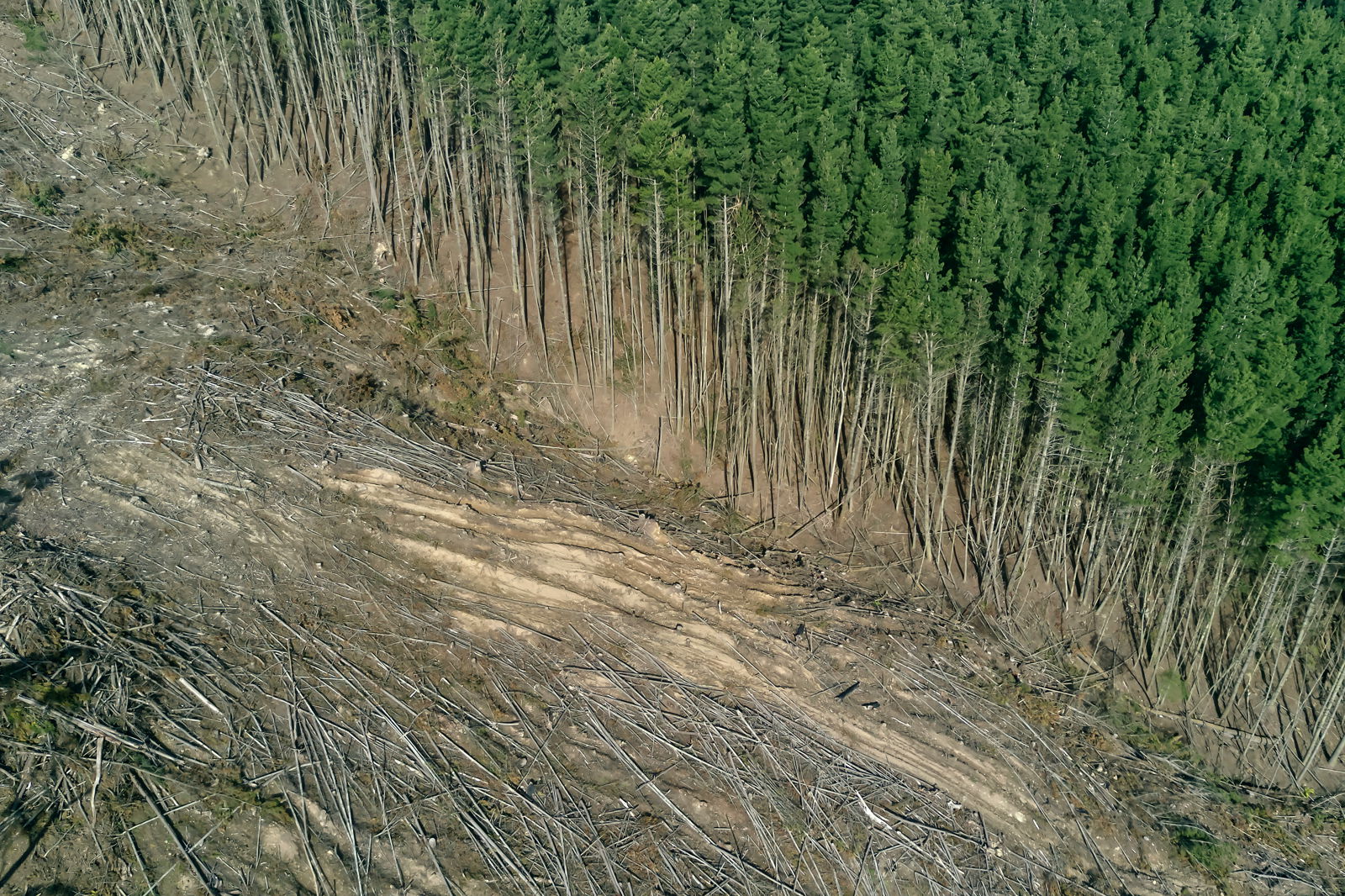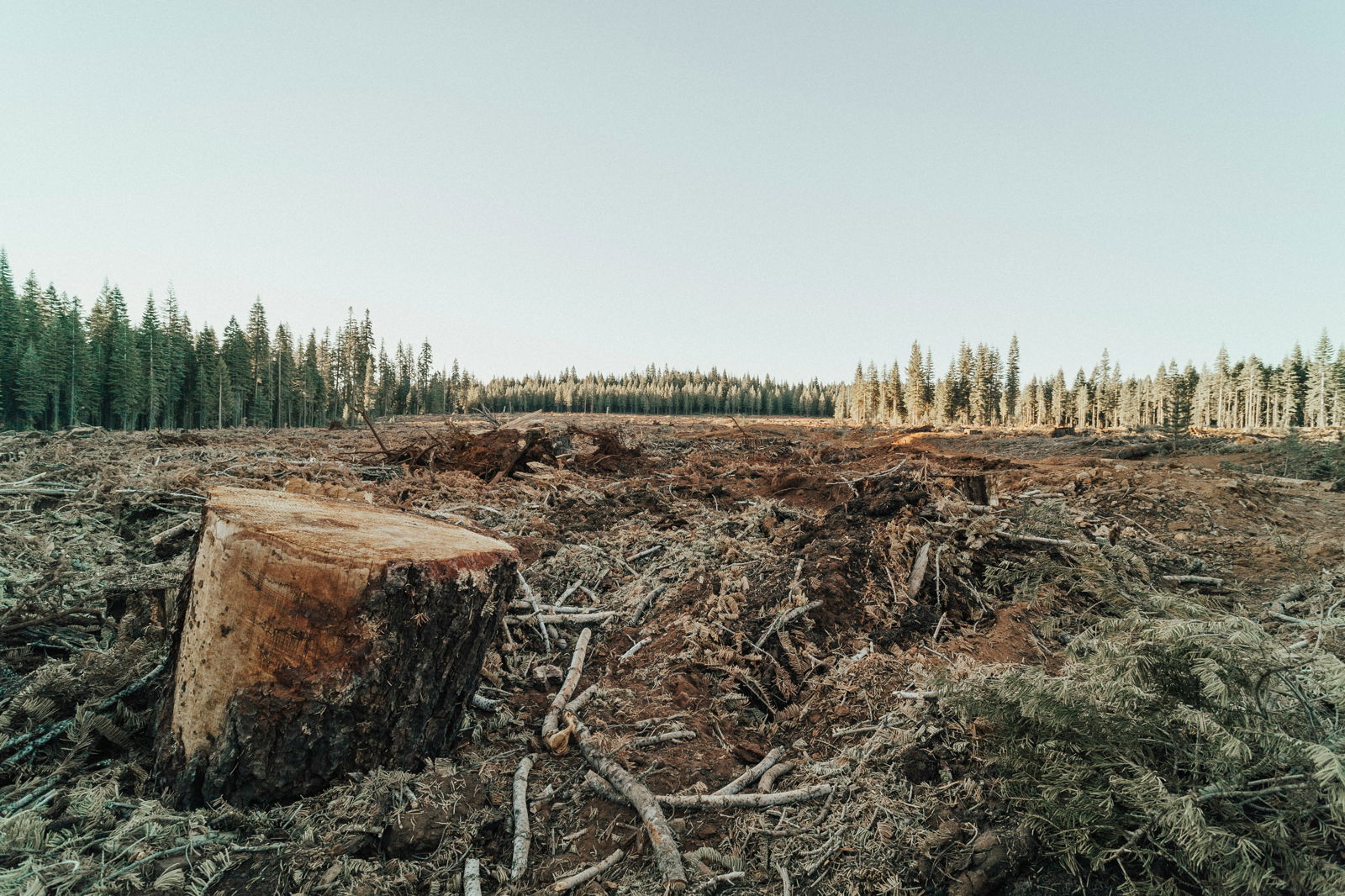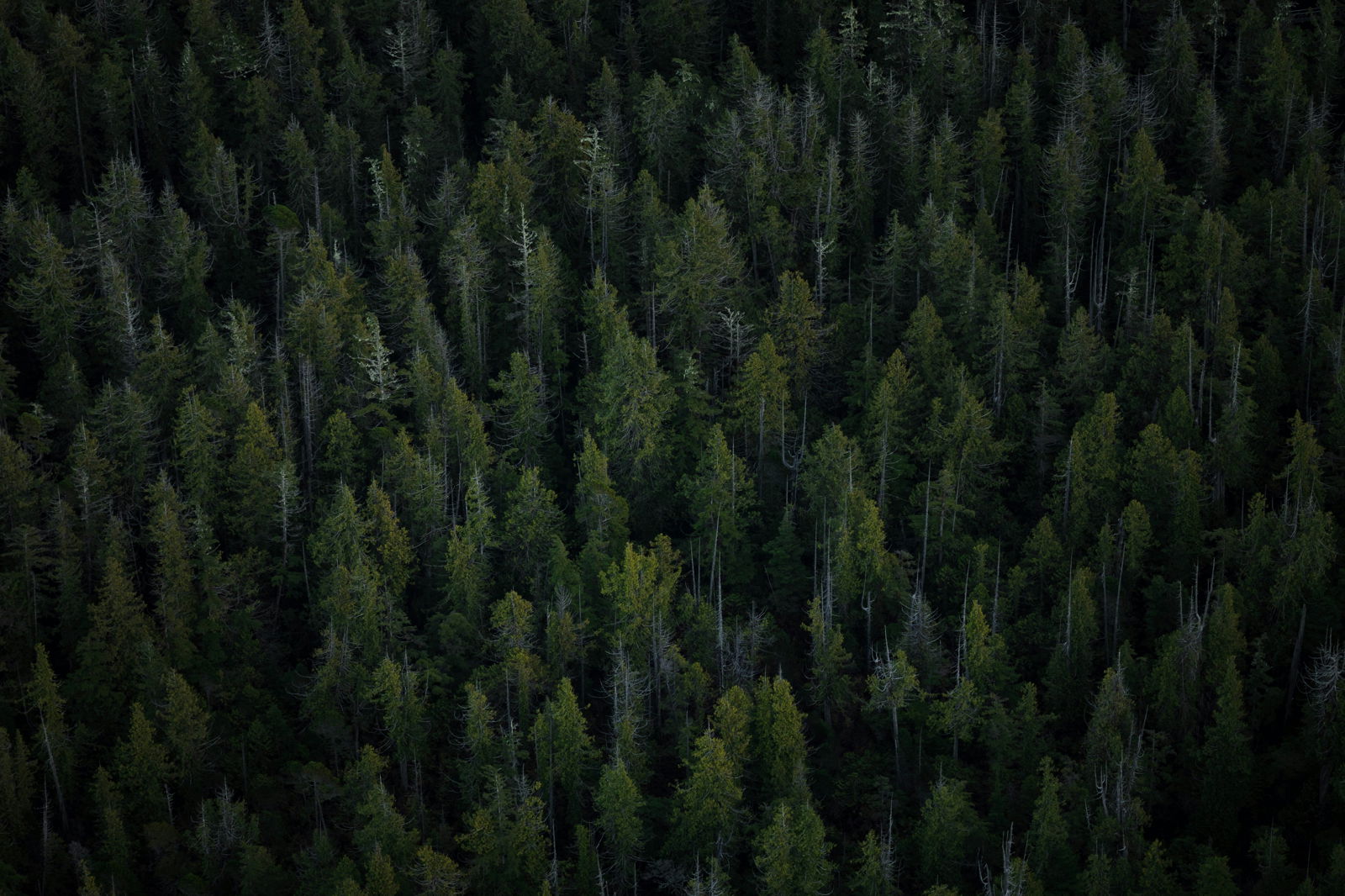Solutions to deforestation: how we can work together for a greener tomorrow


· 12 min read
This article is part of our series to spread free & quality sustainability knowledge for all. Compare on Data Hub™ the sustainability performance of the largest paper & forestry firms: KC, P&G, PM-Kymmene, Sofidel and WestRock.
• Deforestation leads to increased carbon dioxide emissions, loss of biodiversity, natural disasters, and loss of fertile land
• Solutions to deforestation are empowering indigenous communities, encouraging sustainable practices, using technology and innovation as monitoring systems, and raising awareness and educating the public
• There needs to be a concerted effort between the public, government, NGOs, and private enterprises to solve deforestation and avoid a declining rate of climate change
See here detailed sustainability performance of companies like Wilmer International, Starbucks and IKEA linked to agriculture and/or logging.

Deforestation is defined as the intentional clearing of forested land for agriculture, animal grazing, obtaining wood, manufacturing, construction, or other purposes. After the rise of industrialization, there’s been an alarming rate of deforestation.
For example, some 2,000 years ago, 80% of Europe was covered in forest, but only 34% is left today. The figures aren’t as promising everywhere else, with North America losing half of its forests, and only 20% of forested land left in China.
This climate crisis with our world’s forests has led to the loss of biodiversity, global warming, and devastating natural disasters. Experts have stated that we’re nearly at the “tipping point”, where the effects of environmental destruction are no longer reversible. For example, the Amazon might turn into a dry savannah soon if deforestation in the area is not stopped.
To reverse these issues, plenty of efforts to combat deforestation can be adopted. From indigenous empowerment, implementing sustainable practices, raising awareness, and using technology to assist in prevention and reforestation.

Before we go into different strategies for solving deforestation, let’s find out why we need to stop it and its effects on the earth. The first effect of deforestation is increased greenhouse gasses and carbon footprint.
Forests are massive carbon sinks which could absorb carbon dioxide from the atmosphere. Deforested areas will no longer be able to do this, releasing carbon dioxide into the air.
Not only that, the process of clearing forest areas during deforestation may also release carbon into the biosphere, such as burning. Forest loss is a major cause of climate change, contributing to around 10% of global warming and increasing greenhouse gas emissions.
Another effect of deforestation is the loss of habitat and natural resources for animal and plant species. Forests provide a safe refuge for around 70% of species, and clearing them leads to loss of biodiversity.
According to the World Animal Foundation, our planet loses 137 species of plants, animals, and insects every day because of deforestation.
Not only does deforestation threaten wildlife and endangered species, but rising temperatures and increase in forest fires also disrupt the inhabitants.
Lastly, deforestation also affects the water cycle and leads to natural disasters. Trees in the forests help control water levels by absorbing them into the soil. Millions of trees work together and release moisture into the air to create and help regulate the planet’s weather pattern.
Deforested areas mean fewer trees to absorb water into the soil, leading to soil erosion. In turn, soil erosion will lead to the inability to grow crops, coastal flooding, and desertification.
We can objectively say that deforestation affects all of us. Coincidentally, stopping it will also need participation from all of us as well.
So what can we do to help this worrying problem of deforestation?
One of the best ways to solve deforestation is by empowering indigenous communities because around 36% of remaining forests are their land. According to research, indigenous people are responsible for safeguarding 80% of the world’s remaining biodiversity.
The reasons behind this are cultural factors and traditional knowledge. It seems that these communities have an extensive understanding of how they can coexist with nature without disrupting it.
Not only are they better at protecting forests, but supporting them is also cost-effective according to the latest research. A study that involved communities in the Bolivian, Brazilian, and Colombian Amazon found that we can potentially avoid between 42.8 million and 59.7 million metric tons of carbon dioxide emissions per year due to lower deforestation rate. These figures translate financially to USD 25 billion to USD 34 billion per year.
The study mentioned five principal ways for the governments to approach this:
• Strengthening territorial rights for indigenous people, giving them the right to approve any development projects that can directly affect them
• Compensate environmental services
• Promote community forestry
• Reaffirm traditional cultures and knowledge
• Support territorial governance, indigenous organizations, and environmental agencies
By providing these supportive strategies, the community's rights are recognized and their efforts are compensated. In the end, this will encourage custodianship and protection of indigenous land against illegal logging and deforestation.
One of the main culprits of deforestation are private companies which are buying up areas of tropical forests for palm oil, wood fiber, and tree plantations, increasing the rate of deforestation. Authority figures should encourage more sustainable business practices, which could cover:
• Companies can commit to no deforestation. Companies can use RSPO certification or go beyond its standards. Sadly, out of 100 of the most significant tropical timber and pulp companies, 44% have not committed to zero deforestation yet
• Say no to land grabs from local communities and support them financially. There should also be no violations of human and labor rights
• Conduct traceability and know where your resources come from. The company’s business practices should commit to 100% traceability and avoid sourcing their materials from suppliers that are linked to deforestation
• Implement ambitious timelines and milestones concerning reforestation efforts. This can be enforced and supported by the government by creating more policies and environmental laws that target the private sector
Another cause of deforestation is unsustainable farming and agricultural practices. Throughout history, we’ve cleared out land to plant crops and raise farm animals for consumption, degrading the environment through unsustainable practices.
With a growing population, a better way should be adopted to create more sustainable agriculture methods that can produce more food without sacrificing more land. These are ways to conduct sustainable farming practices:
Use organic materials such as natural animal droppings to fertilize crops. Organic composting means less need for expensive fertilizers and it won’t pollute waterways or degrade the soil
Rotating crops can prevent erosion and improve soil quality and fertility. Single-type crops can lead to overconsumption of certain materials in the soil, leading to deficit
Tillage systems disrupt the carbon dioxide inside the soil, releasing it into the atmosphere. It also degrades soil in the end, creating erosion. Conservation tillage includes no-till, strip-till, ridge-till, and mulch-till systems. These techniques reduce tillage passes by 40%, reducing disturbances in the soil and preserving its natural state better.
Less reliance on pesticides and herbicides is proven to reduce costs and increase crop yields in the long run. This technique may be labor-intensive at first, but we’d be better off in the long run. Some examples of integrated pest management are introducing natural enemies of common pests, selective weeding, and regular pruning.
Technology and innovation can give us an advantage to monitor, prevent, and address deforestation. It may help fight illegal deforestation, identify potential reforestation and afforestation areas, empower forest conservationists, and support nature-based projects. These are how technology can help prevent further deforestation:
• The use of satellite images, drones, cameras, audio recorders, and machine-learning technology can help us detect and monitor forest destruction. By coupling it with enforceable law, we might be able to curb clearing forests illegally. Unidentified areas where potential sites of afforestation and reforestation can also be explored via satellite images.
• With technology and innovation, scientists can now learn about our environment more efficiently. For example, the use of spectrometers to measure forest’s photosynthesis levels, genetic diversity of trees, and soil’s microbial inhabitants. By monitoring these data, we can prevent natural destruction before it happens and decrease the rate of deforestation.
• Technology and innovation are now fueling forest conservation projects. Startups like Pachama, Tropiko, and Carble can calculate carbon stock, Wildlife Drones track animals, and Agronomeye can capture landscape-wide natural data. All these projects help quantify the value of our nature, monetizing the restoration of our ecosystem. This encourages efforts such as the carbon credit markets, bringing in more economic incentives for conservation efforts.
There’s no denying that the market dictates the industry, so an effective way of reducing deforestation is by involving the public. One of the ways to get people involved is by raising awareness via social media by creating posts, articles, or videos that encourage more sustainable choices. Some of these practices are:
• Reduce our meat consumption, or adopt a plant-based diet and more sustainable lifestyle. We can reduce deforestation through land clearing for growing animal feed and cattle ranching
• Reduce, reuse, and recycle. Most consumer goods involve deforestation, so it’s best to always choose sustainable products such as second-hand or recycled products instead of buying new
• Reduce the use of palm oil products, as they’re grown in mono-crop plantations obtained from clearing areas of tropical forests. Aside from cooking oil, it can be found as an ingredient in lipstick, soaps, detergents, and ice cream
• Performing trash audits and creating personal targets. Take a record of everything thrown away in one week to recognize single-use products, then create a target to reduce it

The Forest Stewardship Council or FSC is a global non-governmental organization that promotes responsible forestry practices. It was created in 1994, and the organization has now established a forest certification system. With its certification, consumers can now choose products that are made with responsible forestry in mind. Its certification verifies more sustainable practices that support:
• Zero deforestation
• Safeguarding of ancient and endangered forests
• Fair wage and work environment
• Biodiversity preservation
• Community rights, particularly indigenous communities
Aside from its certification, FSC has also developed new solutions that focus on responsible sourcing for companies, conservation of forest value, and accelerating forest recovery. FSC is aiming to grow its reach and have over 300 million hectares of FSC-certified area by 2026.
For FSC’s system to work, it needs to be accepted by the market and recognized as a valuable certification. Currently, only 46% of global consumers are familiar with the FSC label on paper products, proving the organization still needs to expand its reach.
If we look at their goals, FSC’s strategy of forestry management employs a holistic approach to stopping deforestation which will slow climate change. Hopefully, they’re able to transform how the market works and shift consumers’ perspectives.
Some solutions to deforestation include reforestation, afforestation, empowering indigenous communities, eating less meat, reducing paper use, reducing palm oil use, recycling, using technology and innovation to monitor and prevent deforestation, and creating policies that support sustainable practices.
The best solution is to have collaborations between governmental bodies, private enterprises, and the community as a whole. Governments should create policies that will encourage sustainable practices in private enterprises and communities.
Yes, it will decrease if we continue to implement efforts to eliminate it. Currently, it’s declining by 6.3% globally, but it’s still off the target needed to limit climate change.
Some technologies that are used to solve the deforestation issue are drones, satellite imaging, and remote sensing technologies to track and monitor changes in the forest. We can detect illegal deforestation, prevent smoke fires from spreading, and identify areas where reforestation or afforestation may be needed.
Deforestation causes detrimental effects, such as increasing carbon emissions, biodiversity loss, and loss of traditional land. It’s a complex problem that involves all parties: governmental bodies, business entities, NGOs, and communities.
That’s why complete understanding and collaboration between all layers of society is needed to reverse the effects of deforestation and slow climate change. The silver lining is that deforestation is declining by 3.6% globally as of 2021. On the other hand, we’re still not on track for the goal of ending it by 2030 and limiting global warming by only 1.5 degrees C. Hopefully, we’ll get there before it’s too late.
illuminem's Data Hub™ tracking sustainability performance data of the largest paper and forestry companies: Kimberly-Clark, P&G, PM-Kymmene Oyj, Sofidel and WestRock.
Belmaker, G. (2021, April 2). Empowering Indigenous peoples crucial to climate, biodiversity crises: Study. Mongabay Environmental News. https://news.mongabay.com/2021/04/empowering-indigenous-peoples-crucial-to-climate-biodiversity-crises-study/
Conservation tillage. (2021, August 2). Sustainable Agriculture Research & Education Program. https://sarep.ucdavis.edu/sustainable-ag/conservation-tillage
Deforestation. (n.d.). https://education.nationalgeographic.org/resource/deforestation/
Dunne, D. (2021, April 7). Land purchases by private companies accelerate tropical deforestation, data shows. Carbon Brief. https://www.carbonbrief.org/land-purchases-by-private-companies-accelerate-tropical-deforestation-data-shows/
Effects of deforestation. (n.d.). https://pachamama.org/effects-of-deforestation
Jacobo, J. (2021, November 2). COP26: This is how mass deforestation is wiping out species around the world. ABC News. https://abcnews.go.com/US/mass-deforestation-wiping-species-world/story?id=78564880
Lai, O. (2024, March 4). 13 major companies responsible for deforestation. Earth.Org. https://earth.org/major-companies-responsible-for-deforestation/
Marsh, J. (2024, February 28). 10 surprising ways you can raise awareness about environmental issues. Environment Co. https://environment.co/6-ways-to-raise-awareness-about-environmental-issues/
Nerger, M. (2022, October 25). What is Sustainable Agriculture? Rainforest Alliance. https://www.rainforest-alliance.org/insights/what-is-sustainable-agriculture/
Staff, G., & Staff, G. (2015, July 4). 7 steps companies must take to stop deforestation - Greenpeace USA. Greenpeace USA - We fight for a greener, more peaceful world. https://www.greenpeace.org/usa/7-steps-companies-must-take-stop-deforestation/
Tandon, A. (2023, October 4). Drying of Amazon could be early warning of ‘tipping point’ for the rainforest. Carbon Brief. https://www.carbonbrief.org/drying-of-amazon-could-be-early-warning-of-tipping-point-for-the-rainforest/
What is Palm Oil? Facts About the Palm Oil Industry. (n.d.). World Wildlife Fund. https://www.worldwildlife.org/industries/palm-oil
World Bank Group. (2023, August 9). Empowering indigenous peoples to protect forests. World Bank. https://www.worldbank.org/en/news/feature/2023/08/09/empowering-indigenous-peoples-to-protect-forests
illuminem briefings

Climate Change · Environmental Sustainability
Gokul Shekar

Effects · Climate Change
illuminem briefings

Mitigation · Climate Change
Financial Times

Carbon Market · Public Governance
The Guardian

Climate Change · Agriculture
The Guardian

Agriculture · Climate Change